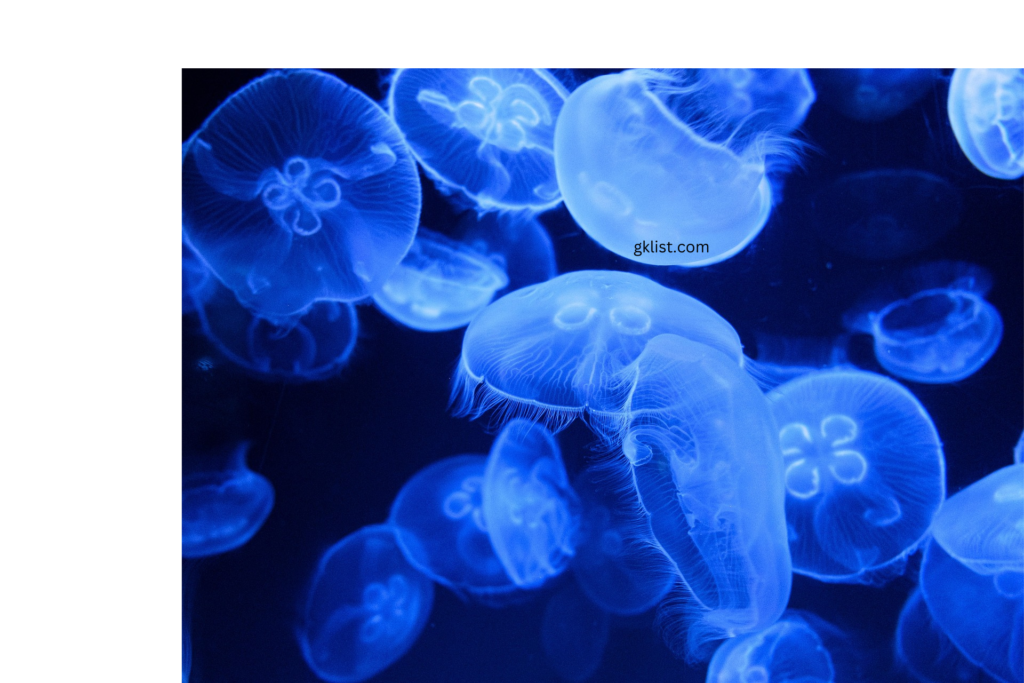
Explore the wonders of the ocean, from glowing jellyfish to deep-sea giants.
Introduction
The ocean is home to some of the most mysterious and incredible creatures on Earth. From the deepest trenches to the vibrant coral reefs, marine life has adapted in astonishing ways to survive. Here, we explore ten fascinating marine creatures and the unique habitats they call home.
1. Leafy Sea Dragon (Phycodurus eques)
Habitat: Coastal Waters of Australia
Resembling floating seaweed, the leafy sea dragon is a master of camouflage. Found in shallow waters off Australia’s southern and western coasts, these creatures blend seamlessly with underwater vegetation to avoid predators. Despite their delicate appearance, they are efficient hunters, feeding primarily on tiny crustaceans like mysid shrimp.
2. Giant Pacific Octopus (Enteroctopus dofleini)
Habitat: Northern Pacific Ocean
This intelligent cephalopod is the largest octopus species, with an arm span reaching up to 14 feet. It thrives in cold, nutrient-rich waters along the coasts of North America and Asia. Known for their problem-solving abilities, giant Pacific octopuses can open jars, mimic other creatures, and even escape from enclosures.
3. Vampire Squid (Vampyroteuthis infernalis)
Habitat: Deep Ocean (Mesopelagic Zone, 2,000-3,000 feet deep)
Despite its ominous name, the vampire squid is a gentle deep-sea dweller. It uses bioluminescence to create glowing displays in the pitch-dark waters of the deep ocean. Instead of ink, it releases a cloud of glowing mucus to confuse predators.
4. Axolotl (Ambystoma mexicanum)
Habitat: Freshwater Lakes of Mexico
Unlike most amphibians, the axolotl remains in its larval form throughout its life. Native to the lakes of Mexico, including the now-drained Lake Xochimilco, this critically endangered species can regenerate entire limbs, making it a subject of scientific research.
5. Mantis Shrimp (Stomatopoda)
Habitat: Tropical and Subtropical Waters
With one of the fastest and most powerful punches in the animal kingdom, mantis shrimp can smash through crab shells and even aquarium glass. They possess some of the most complex eyes in nature, capable of detecting ultraviolet light and seeing polarized light patterns unseen by humans.
6. Japanese Spider Crab (Macrocheira kaempferi)
Habitat: Deep Waters Near Japan
The Japanese spider crab is the largest arthropod, with a leg span of up to 12 feet. These gentle giants inhabit the deep waters of the Pacific near Japan, scavenging the ocean floor for food. Their long, spindly legs make them look like creatures from a sci-fi film.
7. Nudibranch (Nudibranchia)
Habitat: Coral Reefs and Ocean Floors Worldwide
These soft-bodied, colorful sea slugs come in various brilliant hues and patterns, acting as a warning to predators. Some nudibranchs recycle toxins from their prey, making themselves poisonous to potential threats. Their beauty and diversity make them favorites among underwater photographers.
8. Goblin Shark (Mitsukurina owstoni)
Habitat: Deep Sea (Below 3,000 Feet)
One of the most bizarre-looking sharks, the goblin shark has an elongated, flat snout and a jaw that extends forward like a slingshot to catch prey. It resides in deep waters, rarely seen by humans, and is considered a “living fossil” because of its ancient lineage.
9. Christmas Tree Worm (Spirobranchus giganteus)
Habitat: Coral Reefs
Named for its colorful, spiral-shaped appendages, the Christmas tree worm embeds itself into coral and extends its feathery plumes to capture plankton. These vibrant worms come in shades of red, blue, yellow, and white, adding to the beauty of coral reef ecosystems.
10. Blue Dragon (Glaucus atlanticus)
Habitat: Open Ocean (Pelagic Zone)
This tiny but stunning sea slug floats on the ocean surface, using surface tension to move. It preys on venomous Portuguese man o’ war jellyfish and stores the venom in its own body, making it even more dangerous than its prey. Its electric blue color helps it blend in with the ocean waves, protecting it from predators above and below.
Conclusion
The marine world is filled with incredible creatures that have evolved to survive in some of the most extreme environments on Earth. From the deep-sea goblin shark to the vibrant nudibranchs of coral reefs, these fascinating animals showcase the diversity and beauty of ocean life. As human activities impact marine ecosystems, it becomes increasingly important to appreciate and protect these unique species and their habitats.